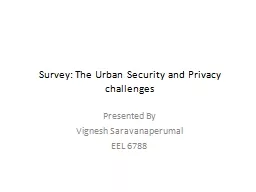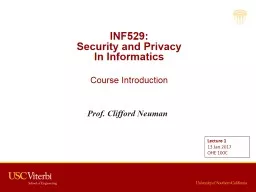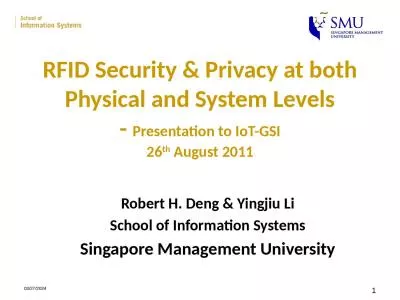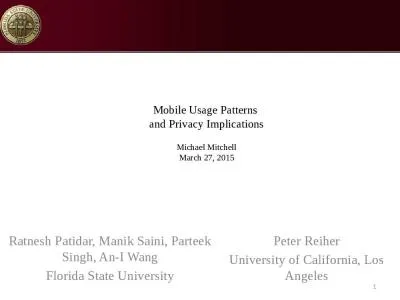PPT-Survey: The Urban Security and Privacy challenges
Author : marina-yarberry | Published Date : 2017-11-05
Presented By Vignesh Saravanaperumal EEL 6788 Introduction Urban sensing Risk Possessed Confidentiality and Privacy Integrity Availability Traffic pattern Observed
Presentation Embed Code
Download Presentation
Download Presentation The PPT/PDF document "Survey: The Urban Security and Privacy c..." is the property of its rightful owner. Permission is granted to download and print the materials on this website for personal, non-commercial use only, and to display it on your personal computer provided you do not modify the materials and that you retain all copyright notices contained in the materials. By downloading content from our website, you accept the terms of this agreement.
Survey: The Urban Security and Privacy challenges: Transcript
Download Rules Of Document
"Survey: The Urban Security and Privacy challenges"The content belongs to its owner. You may download and print it for personal use, without modification, and keep all copyright notices. By downloading, you agree to these terms.
Related Documents














